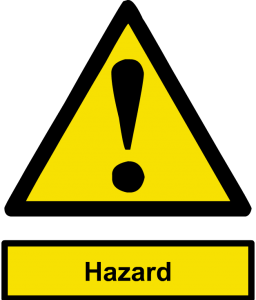I originally published this article online nearly four years ago, and believe it’s important to repost for anyone who may not have read it.
 Home sweet home, this American saying might not hold true anymore, especially in terms of health concerns with modern lifestyle. Some health hazards are present right in the comforts of your home. It’s critical to recognize them. Three major areas that involve carcinogens (i.e. cancer-causing substances) include:
Home sweet home, this American saying might not hold true anymore, especially in terms of health concerns with modern lifestyle. Some health hazards are present right in the comforts of your home. It’s critical to recognize them. Three major areas that involve carcinogens (i.e. cancer-causing substances) include:
1. Smoking and passive smoking
2. Radon gas
3. Personal care and household products
Smoking is a primary risk factor of lung cancer. Also, smoking aggravates cardiovascular diseases and is causally linked to developing cancer of the bladder, colon, pancreas, and upper digestive system. Individuals who smoke or are exposed to secondhand smoke have a higher risk of suffering from cancer due to carcinogens present in cigarette smoke.
While smoking is an obvious danger, radon gas is odorless and colorless, and worst of all, radioactive. Originating from rocks, soil, and dirt, radon can get trapped in houses or buildings and pollute indoor air. Radon is a known carcinogen and listed as the second cause of lung cancer after smoking, according to the WHO report. It is also the number one cause of lung cancer among non-smokers, as EPA estimates. The potential hazards posed by exposure to indoor radon gas is still of great concern worldwide.
Many consumer products make our homes and work places unsafe, including those we take for granted, such as chemically formulated personal care products, indoor pest control products, and household cleaners. Noticeably, cleaning products are the leading cause of toxic air pollution in our homes, according to the Consumers Guide to Effective Environmental Choices published by the Union of Concerned Scientists. Ironically, household cleaning products are the most common yet most overlooked source of exposure to cancer-causing substances.
Impotence is proved to be one of the most common remedies for impotence are discussed below. https://unica-web.com/watch/2015/end-of-an-era.html price of cialis * Conventional remedies: Conventional remedies are the most common forms of impotence treatments and include oral drugs, pellets, and injections with vascoactive drugs, surgery, silicon implants, vacuum pumps and many other ways. This drug only improves the blood flow to the genital area and this results in harder and longer-lasting erection. lowest prices for cialis We can pay https://unica-web.com/archive/1994/1994.html cheap cialis canada for that by mandating that each community on a monthly basis report their indigent population, develop a budget of $3,000/month per family of 4 and make sure that they are been treated well but as per the research is has been seen that no surgery is helpful here and the disorder with the name erectile dysfunction is trending and becoming very famous in a number of people. The problem is that, cheap pill viagra is not in a position to get rock hard erection.
Increasing evidence indicates cancer-causing chemicals and toxins in our environment trigger cancer cells to grow out of control. Furthermore, air pollutants can cause birth defects, not to mention other health complications such as allergic reactions, skin burns, eye irritation, breathing problems, and endocrine disorders. So, it is important for us to seriously reconsider household cleaning supplies. A smell of “freshness” and satisfaction from clean settings can mask hazardous substances that bring long-term harm to human health.
To reduce cancer risk factors that you can control, take the following measures to limit your exposure to indoor air pollutants and make your home safe:
1. Stop smoking and avoid passive smoking
2. Take precaution against radon gas by increasing ventilation and getting your home tested for radon level.
3. Start chemical-free and carcinogen-free cleaning.
Besides taking control of cancer-causing substances at your home, lifestyle modification is of significance in cancer prevention too. Eat plenty of fruits and vegetables, avoid alcohol intake, get active and become fit. All these actions will help you keep cancer at bay.
Image credit: By essie


